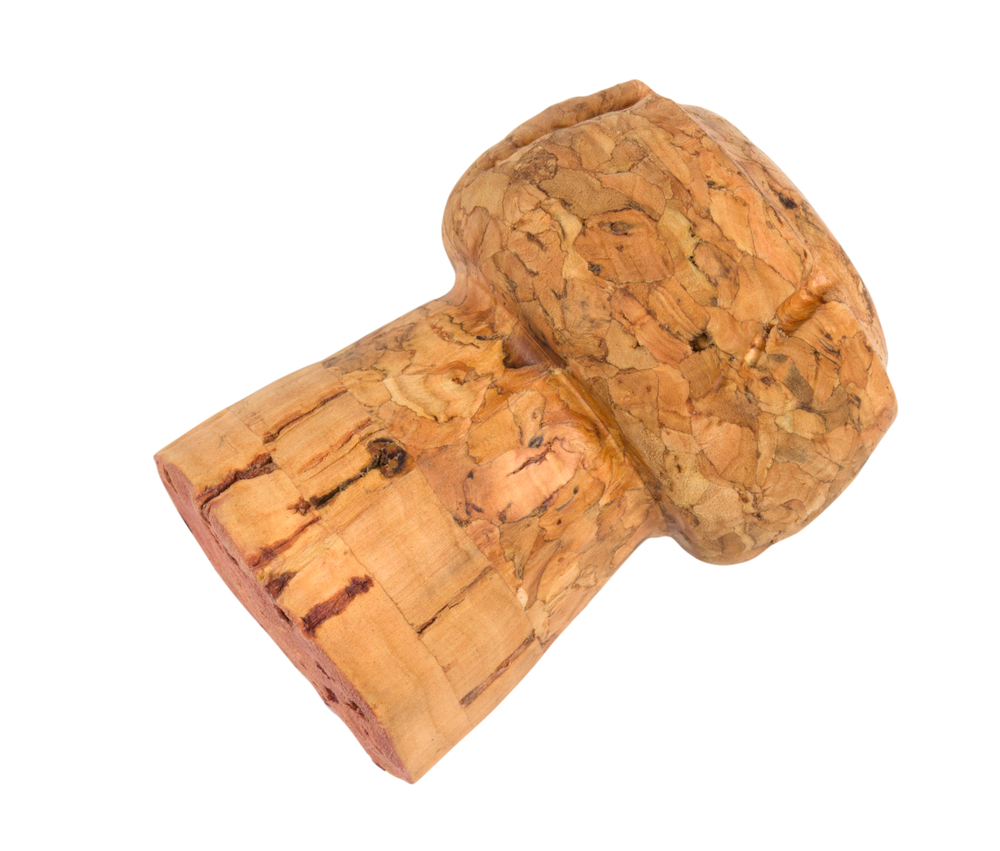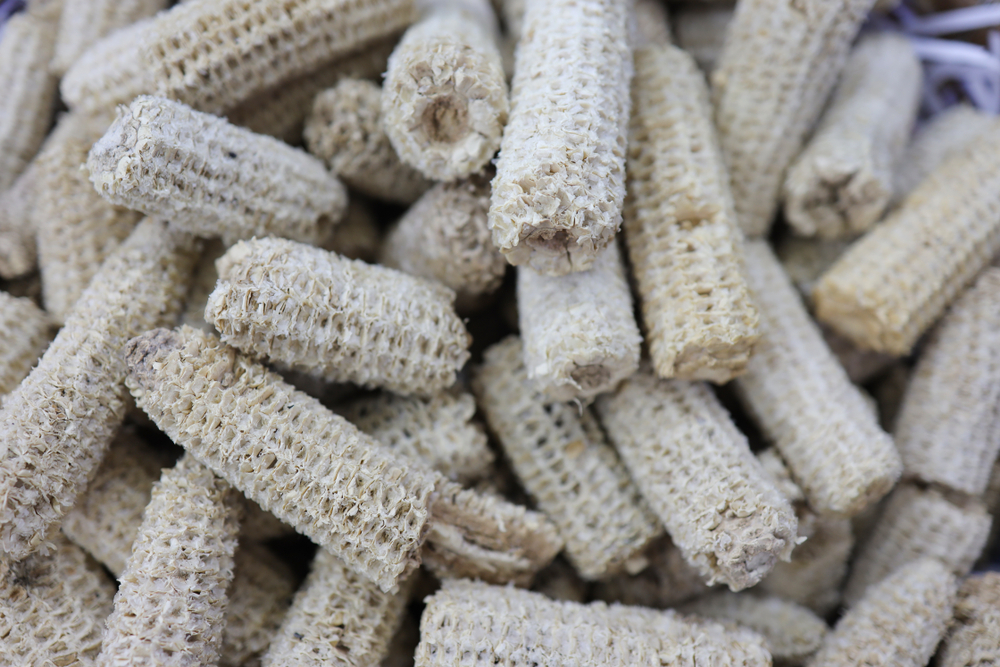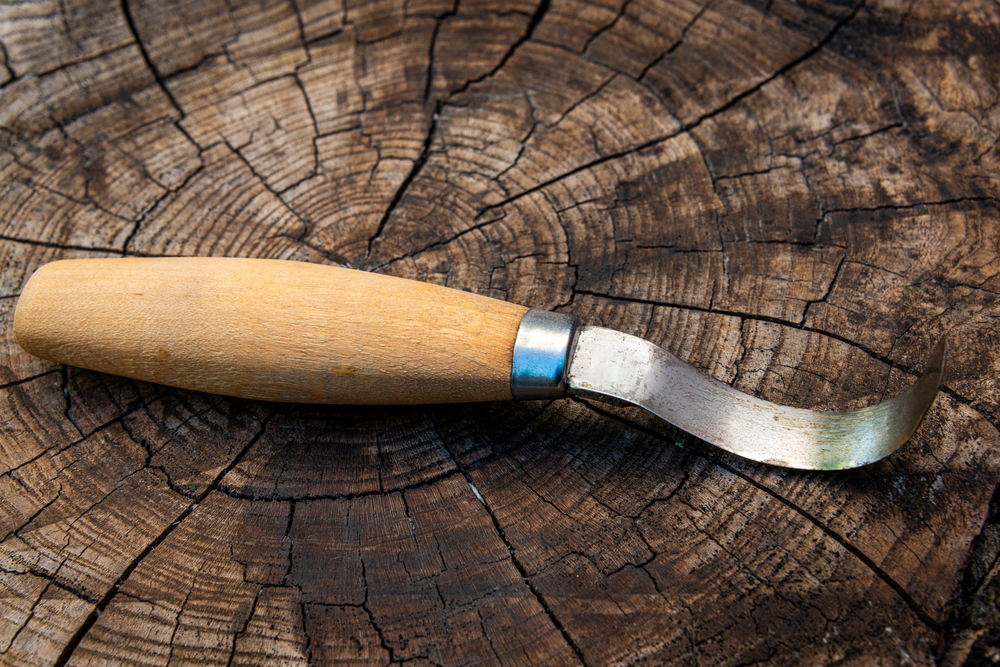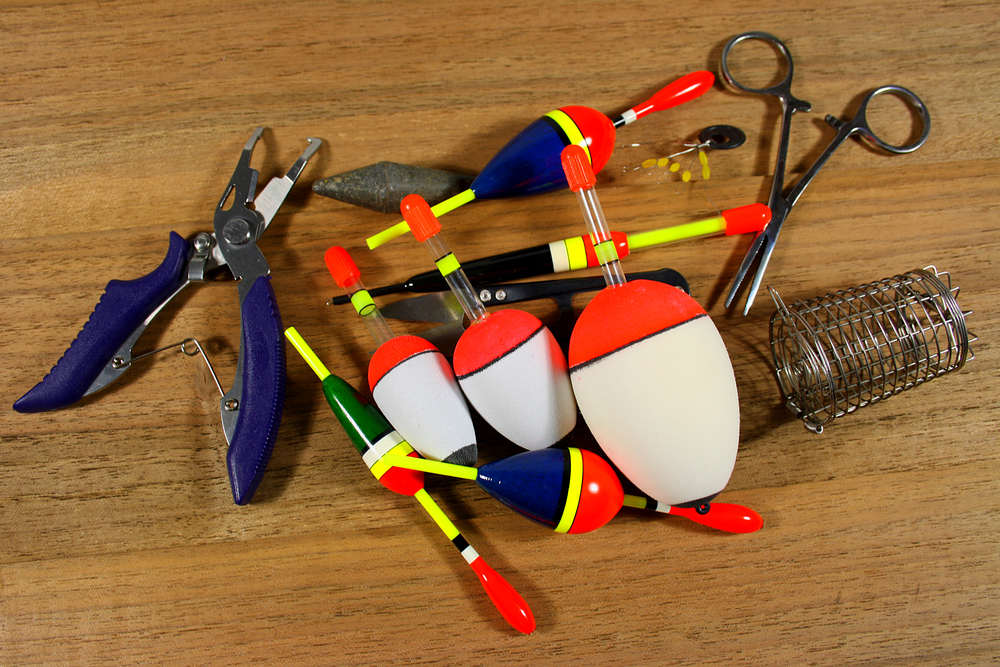
The best part of watching the popular TV show MacGyver was seeing the title character get out of tricky situations with random nearby items. Now you too can capture that resourceful spirit – and employ it in the world of fishing!
Read on for some great homemade lure-making options that will make even MacGyver green with envy. As an added bonus, these tips will help save you money, too!
Cork Poppers
A group of champagne corks, right? Wrong, it’s an arsenal of potential fishing poppers.
Don’t dispose of those wine bottle corks! Instead, why not turn them into fishing lures?
What you need:
- Cork Stopper
- Long Hook
- Sandpaper
- Epoxy Glue
- Waterproof Paint and Paint Brush

- Cut a fine line along the length of the cork, no deeper than the halfway point.
- Insert the hook into the cut. Make sure that the eye of the hook sticks out just beyond of the larger end of the cork.
- When the hook is in its desired position, glue it into place. Fill the cut itself completely with more glue. Give ample time for glue to dry.
- Now that the basic structure of the hook has been created, it’s time for the aesthetics. Sandpaper the cork to your desired shape. It is advised that you sandpaper the back end in a way that it’s more streamlined to the hook.
- Paint the lures in the colors of your choice, and don’t forget to add eyes for a more authentic look.
Tip: Champagne bottle corks work the best because one end has a rounded edge, perfect for more water displacement as you retrieve the lure.
Added Bonus: Bottle corks work so well as lures that there’s even a company that specializes in them: Booze Baits. This organization makes top water poppers using a cork and a bottle cap attached to the front, which makes a sound as you retrieve it. It may look like a joke, but you can actually catch fish with this lure (though it makes a good joke gift regardless).
Corncob Bobber

By all means eat the corn, but the real value for anglers lies in the remains.
When handled properly, a corncob makes a surprisingly useful bobber.
What You Need:
- Cob of Corn
- Small Saw or Sharp Knife
- Coarse Sandpaper
- Drill
- Polyurethane Varnish
- 5”-6” twig
- Saw chunks of cob into appropriate widths. One to two inches should suffice.
- Sandpaper the rough edges until completely smooth.
- Drill a 1/4″ to 3/8″ hole down the center of the cob, all the way through.
- Dip the cob into polyurethane varnish. This ensures that your bobber will stay water resistant and have a longer life.
- When ready to fish, feed your line through the hole to the desired length. Wedge an appropriately sized twig through and peg the line to the bobber.
Tip: To make your bobber stand out more on the water, don’t be afraid to paint one end red or a similarly bright color. This gives yourself a better chance to see subtle bites.
Added Bonus: If you’re not a corn eater, or have some leftover, take off the kernels and use them for carp fishing. Very effective when used with a hair rig.
Learn the very best bass fishing techniques!
There are dozens of ways to catch a bass, but to make things easier, we’ve narrowed it down to six essential techniques. Click here to find out the very best ways to catch a bass.
Spoons

This was a spoon for eating, but now it’s a spoon for fishing.
This one seems like a no-brainer, right? If you’re going to name a popular fishing lure after a homemade object, you can count on it being copied by resourceful anglers with extra utensils floating around.
What You Need
- Spoons (the kind you use to eat with)
- Strong Wire Cutters
- Metal File
- Drill
- Split-rings
- Hooks
- Cut the handle off. File down the edge of the spoon to get a smooth shape.
- Drill a hole on either side of the spoon, large enough to fit in split rings.
- After putting on the split rings, attach a treble hook to the back (the more rounded side).
Tip: You can change the action of the spoon not only by how you file down the shape of the spoon, but also the depth of the bowl. Try using a hammer to flatten it a little bit for a different look as you troll.
For some inspiration for how to make your fishing spoons look good, check out the work of this.
Ever wanted to catch a world record fish? Well find out here how you can!
Catching a trophy fish is a great reason to be proud, but a world record fish is even better. Here’s everything you need to know to catch a world record fish and earn a fishing legacy you can really be proud of.
Feathers
Adding feathers to hooks is one of the most common techniques for anglers looking to customize their lures. Simply get some feathers from an old pillow or wherever you can manage, then use line to wrap it around the back end of the hook. Apply some glue and voila! You got an enticing new look that works especially great for jerkbaits and topwater lures.
Emergency Fishing
Being a resourceful angler doesn’t just mean you can make your own lures – it also means you can fish anywhere, anytime, even in dire situations. When out in the wilds, any of a number of things can happen that lead you to get lost, injured, or stuck without transportation far from civilization. Were such an outcome to arise, and the need for food becomes of utmost importance for survival, you’d do well to have on you an emergency fishing kit. Fish are one of the best sources of food in the wild, primarily thanks to their abundance and the fact that they are all edible (you may not like the taste of some, but food is food when it’s a life or death situation).

What You Need
- Some Jigheads
- Plastic grubs, worms, and shad-like baits
- Salmon Eggs
- Split Shot Sinkers
- Small Bobber
- 30-50 feet of line
- Hooks (in sizes ranging from #4-#8)
The idea of an emergency fishing kit is to make it compact – you’re tackle box is just too bulky for some trips.
If you’re lost in the middle of nowhere without a fishing kit, there are still ways to catch fish. When worse comes to worst, your shoelace or even a thread from a piece of clothing can act as line. As for hooks, needles, bone, twigs, thorns, paper clips, metal from an aluminum can…basically, anything even a little sharp attached to a line will do the trick. Obviously the more enticing you make it the more the fish will bite, so even adding some jewelry that can catch the light might attract a curious fish.
Pocket Rod
The emergency fishing kit mentioned above is great for survival situations, but not ideal for a more controlled fishing environment. When taking a bus to the local pond for some fishing, or if you’re traveling anywhere and want to pack as lightly as you can, than a pocket rod is the way to go. The video above says it all!






